-
 Bitcoin
Bitcoin $107,443.3008
-1.17% -
 Ethereum
Ethereum $2,494.2503
-0.63% -
 Tether USDt
Tether USDt $1.0003
0.00% -
 XRP
XRP $2.2496
2.23% -
 BNB
BNB $658.7569
0.63% -
 Solana
Solana $154.9826
1.94% -
 USDC
USDC $1.0000
0.01% -
 TRON
TRON $0.2799
1.07% -
 Dogecoin
Dogecoin $0.1659
-1.78% -
 Cardano
Cardano $0.5745
0.25% -
 Hyperliquid
Hyperliquid $39.7005
0.13% -
 Bitcoin Cash
Bitcoin Cash $519.5989
3.78% -
 Sui
Sui $2.7874
-2.40% -
 Chainlink
Chainlink $13.3762
-1.69% -
 UNUS SED LEO
UNUS SED LEO $9.0784
-0.64% -
 Avalanche
Avalanche $17.9846
-2.81% -
 Stellar
Stellar $0.2390
-0.06% -
 Toncoin
Toncoin $2.9028
0.25% -
 Shiba Inu
Shiba Inu $0.0...01147
-2.17% -
 Litecoin
Litecoin $86.6956
-1.27% -
 Hedera
Hedera $0.1508
-0.50% -
 Monero
Monero $322.6222
3.26% -
 Polkadot
Polkadot $3.4124
-2.99% -
 Dai
Dai $0.9999
0.00% -
 Bitget Token
Bitget Token $4.5434
-1.97% -
 Ethena USDe
Ethena USDe $1.0002
0.00% -
 Uniswap
Uniswap $7.1562
-2.61% -
 Aave
Aave $275.8830
-1.02% -
 Pepe
Pepe $0.0...09790
-4.04% -
 Pi
Pi $0.5018
-5.09%
Wallet address query steps in Trust Wallet
To query wallet addresses in Trust Wallet, navigate to the detailed view of your chosen cryptocurrency, tap "Receive," and verify the address using the QR code provided.
Apr 05, 2025 at 08:35 pm
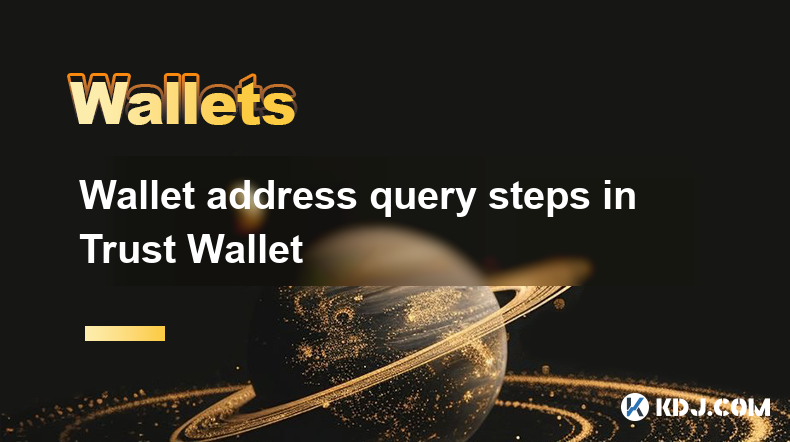
Trust Wallet is a popular mobile cryptocurrency wallet that supports a wide range of digital assets. One of the essential functions of any cryptocurrency wallet is the ability to manage and query wallet addresses. In this article, we will walk you through the detailed steps to query wallet addresses in Trust Wallet, ensuring you can easily access and manage your cryptocurrency holdings.
Accessing Trust Wallet
To begin querying your wallet addresses in Trust Wallet, you first need to access the application. Trust Wallet is available for both iOS and Android devices. You can download it from the Apple App Store or Google Play Store. Once installed, open the app and log in using your existing wallet or create a new one if you are a new user. Make sure you have your recovery phrase securely stored, as this is crucial for accessing your wallet.
Navigating to the Wallet Section
After logging into Trust Wallet, you will be directed to the main dashboard. Here, you can see an overview of your cryptocurrency holdings. To query your wallet addresses, you need to navigate to the specific cryptocurrency you are interested in. Tap on the cryptocurrency token you want to query, such as Bitcoin, Ethereum, or any other supported token. This will take you to the detailed view of that particular cryptocurrency.
Viewing the Wallet Address
Once you are in the detailed view of the selected cryptocurrency, you will see several options. To query your wallet address, look for the "Receive" button. Tapping on the "Receive" button will display your wallet address for that specific cryptocurrency. This address is unique to your wallet and is used to receive funds. You can copy this address by tapping on the "Copy" button next to it, making it easy to share with others when you need to receive payments.
Verifying the Wallet Address
It is crucial to verify the wallet address before using it to receive funds. Trust Wallet provides a QR code alongside the address, which you can scan to ensure accuracy. Additionally, you can manually check the address to ensure it matches the one displayed in your wallet. Any discrepancies could lead to funds being sent to the wrong address, which could result in permanent loss. Always double-check the address before proceeding with any transactions.
Using the Wallet Address
Once you have verified your wallet address, you can use it to receive cryptocurrency. Share the address or the QR code with the sender, who will then use it to send funds to your Trust Wallet. After the transaction is complete, you can check the status of the transaction within Trust Wallet by navigating to the "Transactions" section of the specific cryptocurrency. Here, you will see a list of all incoming and outgoing transactions associated with that address.
Managing Multiple Wallet Addresses
Trust Wallet allows you to manage multiple wallet addresses for different cryptocurrencies. To query addresses for other cryptocurrencies, simply repeat the steps mentioned above for each token. This flexibility enables you to keep track of various digital assets within a single application. You can switch between different cryptocurrencies by tapping on their respective icons on the main dashboard, making it easy to manage your entire portfolio.
Securing Your Wallet Addresses
Security is paramount when dealing with cryptocurrency. Trust Wallet offers several features to help secure your wallet addresses. Enable two-factor authentication (2FA) to add an extra layer of security to your account. Additionally, never share your private keys or recovery phrase with anyone, as these can be used to access your funds. Regularly update the Trust Wallet app to ensure you have the latest security patches and features.
Troubleshooting Common Issues
Sometimes, you may encounter issues when querying wallet addresses in Trust Wallet. If you are unable to see your address, ensure that you are connected to the internet and that the app is up to date. If the problem persists, try restarting the app or your device. If you still face issues, you can reach out to Trust Wallet's customer support for assistance. They can help resolve any technical problems you may encounter.
Advanced Features and Tools
Trust Wallet also offers advanced features and tools that can enhance your experience when querying wallet addresses. For instance, you can use the built-in DApp browser to interact with decentralized applications directly from your wallet. This can be useful for managing your addresses and transactions in a more integrated manner. Additionally, Trust Wallet supports staking and earning features, allowing you to earn rewards on your cryptocurrency holdings.
Integrating with Other Services
Trust Wallet can be integrated with other services to enhance its functionality. For example, you can connect your wallet to decentralized exchanges (DEXs) to trade cryptocurrencies directly from your wallet. This integration can streamline the process of managing your wallet addresses and executing transactions. To do this, navigate to the DApp browser within Trust Wallet and connect to the desired service. Follow the on-screen instructions to link your wallet and start trading.
Keeping Track of Transactions
After querying your wallet address and receiving funds, it's important to keep track of your transactions. Trust Wallet provides a detailed transaction history for each cryptocurrency. To view this, go to the detailed view of the specific cryptocurrency and tap on the "Transactions" tab. Here, you will see a list of all transactions, including the date, amount, and status. This feature helps you monitor your funds and ensure that all transactions are processed correctly.
Exporting Wallet Data
For advanced users, Trust Wallet allows you to export your wallet data, including addresses and transaction history. This can be useful for tax purposes or for integrating with other financial management tools. To export your data, go to the settings menu within Trust Wallet and look for the "Export" option. Follow the prompts to select the data you want to export and the format you prefer. This feature provides flexibility and control over your cryptocurrency data.
Staying Updated with Trust Wallet
Trust Wallet regularly updates its application to introduce new features and improve security. To ensure you have the latest version, enable automatic updates on your device or manually check for updates in the app store. Staying updated ensures that you can take advantage of new tools and features that may enhance your ability to query and manage wallet addresses. Additionally, follow Trust Wallet's official social media channels and blog to stay informed about the latest developments and announcements.
Common Questions Related to
Q: How do I find my wallet address in Trust Wallet?
A: To find your wallet address in Trust Wallet, open the app and navigate to the detailed view of the cryptocurrency you are interested in. Tap on the "Receive" button, and your wallet address will be displayed. You can copy it or use the QR code provided.
Q: Can I have multiple wallet addresses in Trust Wallet?
A: Yes, Trust Wallet allows you to manage multiple wallet addresses for different cryptocurrencies. You can query addresses for each token by following the same steps for each one.
Q: How can I ensure the security of my wallet addresses in Trust Wallet?
A: To secure your wallet addresses, enable two-factor authentication (2FA), never share your private keys or recovery phrase, and keep the Trust Wallet app updated with the latest security patches.
Q: What should I do if I can't see my wallet address in Trust Wallet?
A: If you can't see your wallet address, ensure you are connected to the internet and that the app is up to date. Try restarting the app or your device. If the issue persists, contact Trust Wallet's customer support for assistance.
Q: Can I export my wallet data from Trust Wallet?
A: Yes, you can export your wallet data, including addresses and transaction history, from Trust Wallet. Go to the settings menu, select the "Export" option, and follow the prompts to choose the data and format you want to export.
Q: How can I keep track of my transactions in Trust Wallet?
A: To keep track of your transactions, go to the detailed view of the specific cryptocurrency and tap on the "Transactions" tab. Here, you will see a list of all transactions, including the date, amount, and status.
Q: Can I use Trust Wallet to interact with decentralized applications (DApps)?
A: Yes, Trust Wallet has a built-in DApp browser that allows you to interact with decentralized applications directly from your wallet. This can enhance your experience when managing your wallet addresses and transactions.
Q: How can I integrate Trust Wallet with other services like decentralized exchanges?
A: To integrate Trust Wallet with other services, use the DApp browser within the app to connect to the desired service. Follow the on-screen instructions to link your wallet and start using the service.
Q: How often should I update Trust Wallet?
A: It is recommended to keep Trust Wallet updated regularly to ensure you have the latest security patches and features. Enable automatic updates on your device or manually check for updates in the app store.
Q: Where can I find the latest updates and announcements from Trust Wallet?
A: You can find the latest updates and announcements from Trust Wallet by following their official social media channels and blog.
Disclaimer:info@kdj.com
The information provided is not trading advice. kdj.com does not assume any responsibility for any investments made based on the information provided in this article. Cryptocurrencies are highly volatile and it is highly recommended that you invest with caution after thorough research!
If you believe that the content used on this website infringes your copyright, please contact us immediately (info@kdj.com) and we will delete it promptly.
- BTCBULL: Riding Bitcoin's Bull Run to Crypto Glory
- 2025-07-01 20:30:11
- Bitcoin's July Jolt: Will We See a New ATH?
- 2025-07-01 20:30:11
- Bitcoin Cash Price Surges to 8-Month High: Is $1,700 Next?
- 2025-07-01 20:35:12
- Solana, Pepe Coin, Crypto Meme Mania: What's Hot and What's Not?
- 2025-07-01 19:10:12
- Bitcoin Cash Price Pump: Unpacking the Reasons Behind the Surge
- 2025-07-01 18:30:12
- Dogecoin's Wild Ride: Rally Potential Amidst Investor Panic?
- 2025-07-01 19:10:12
Related knowledge
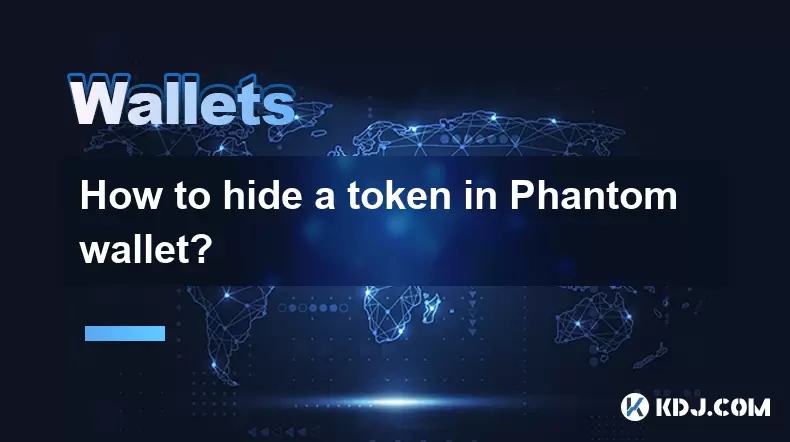
How to hide a token in Phantom wallet?
Jul 01,2025 at 05:49pm
Understanding the Phantom Wallet InterfacePhantom wallet is a popular non-custodial wallet used primarily for interacting with the Solana blockchain. It allows users to store, send, receive, and manage various tokens, including both fungible and non-fungible tokens (NFTs). Before attempting to hide a token, it's essential to understand how the wallet in...
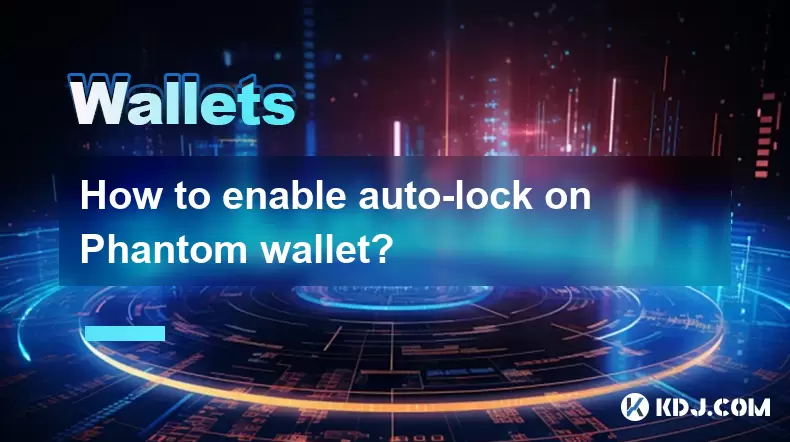
How to enable auto-lock on Phantom wallet?
Jul 01,2025 at 04:01pm
What is Auto-Lock in Phantom Wallet?Phantom wallet is a popular non-custodial cryptocurrency wallet used primarily for interacting with the Solana blockchain. One of its security features includes the ability to set an auto-lock timer, which ensures that the wallet locks itself automatically after a period of inactivity. Auto-lock enhances security by p...
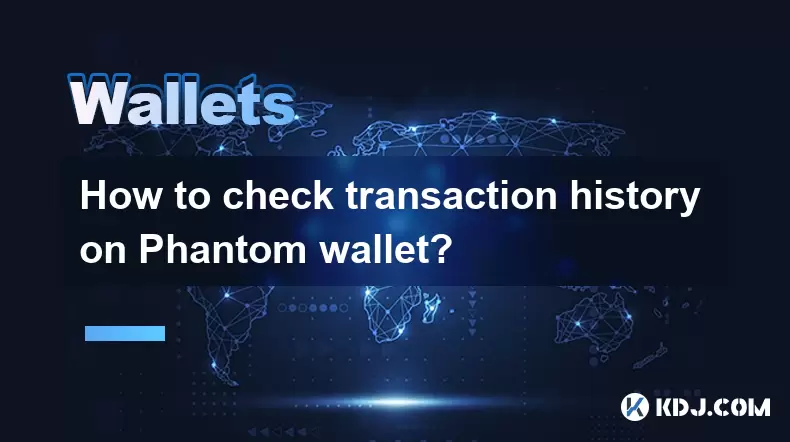
How to check transaction history on Phantom wallet?
Jul 01,2025 at 07:49pm
What Is Phantom Wallet?Phantom wallet is a popular non-custodial cryptocurrency wallet primarily used for interacting with the Solana blockchain. It allows users to store, send, receive, and manage their Solana-based tokens and NFTs securely. One of the essential features of any crypto wallet is the ability to check transaction history. Understanding ho...
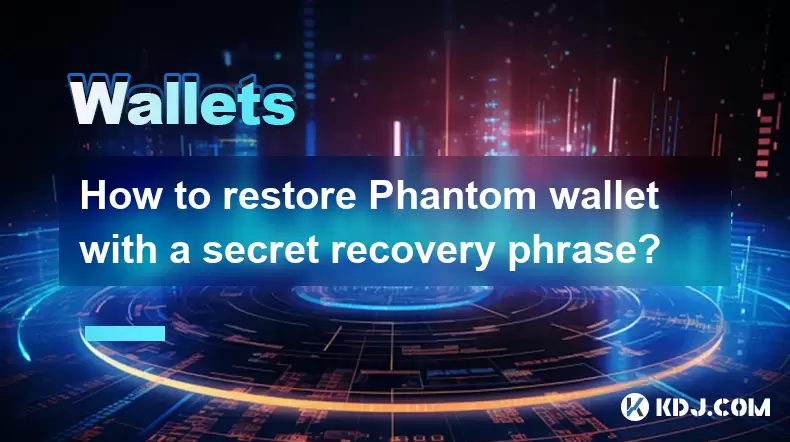
How to restore Phantom wallet with a secret recovery phrase?
Jul 01,2025 at 02:56pm
What is a Phantom wallet and why might you need to restore it?Phantom is a popular non-custodial cryptocurrency wallet primarily used for interacting with the Solana blockchain. It allows users to store, send, receive, and stake SOL tokens as well as manage NFTs and other SPL tokens. Since Phantom wallet is non-custodial, users are solely responsible fo...
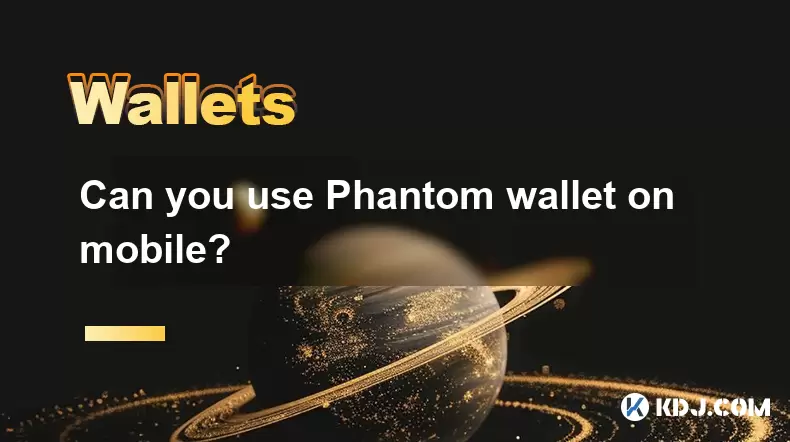
Can you use Phantom wallet on mobile?
Jul 01,2025 at 06:07pm
Understanding Phantom Wallet and Its Mobile CompatibilityPhantom wallet is a non-custodial cryptocurrency wallet primarily designed for interacting with the Solana blockchain. Initially developed as a browser extension, Phantom has expanded its functionality to include mobile platforms. This means users can access their Solana-based assets on mobile dev...

How to fix Phantom wallet connection issues?
Jul 01,2025 at 02:21pm
Understanding Phantom Wallet Connection IssuesPhantom wallet is one of the most popular non-custodial wallets for interacting with Solana-based decentralized applications (dApps). However, users occasionally face connection problems when trying to link their wallet to a dApp or platform. These issues can manifest as error messages, failed connection att...

How to hide a token in Phantom wallet?
Jul 01,2025 at 05:49pm
Understanding the Phantom Wallet InterfacePhantom wallet is a popular non-custodial wallet used primarily for interacting with the Solana blockchain. It allows users to store, send, receive, and manage various tokens, including both fungible and non-fungible tokens (NFTs). Before attempting to hide a token, it's essential to understand how the wallet in...

How to enable auto-lock on Phantom wallet?
Jul 01,2025 at 04:01pm
What is Auto-Lock in Phantom Wallet?Phantom wallet is a popular non-custodial cryptocurrency wallet used primarily for interacting with the Solana blockchain. One of its security features includes the ability to set an auto-lock timer, which ensures that the wallet locks itself automatically after a period of inactivity. Auto-lock enhances security by p...

How to check transaction history on Phantom wallet?
Jul 01,2025 at 07:49pm
What Is Phantom Wallet?Phantom wallet is a popular non-custodial cryptocurrency wallet primarily used for interacting with the Solana blockchain. It allows users to store, send, receive, and manage their Solana-based tokens and NFTs securely. One of the essential features of any crypto wallet is the ability to check transaction history. Understanding ho...

How to restore Phantom wallet with a secret recovery phrase?
Jul 01,2025 at 02:56pm
What is a Phantom wallet and why might you need to restore it?Phantom is a popular non-custodial cryptocurrency wallet primarily used for interacting with the Solana blockchain. It allows users to store, send, receive, and stake SOL tokens as well as manage NFTs and other SPL tokens. Since Phantom wallet is non-custodial, users are solely responsible fo...

Can you use Phantom wallet on mobile?
Jul 01,2025 at 06:07pm
Understanding Phantom Wallet and Its Mobile CompatibilityPhantom wallet is a non-custodial cryptocurrency wallet primarily designed for interacting with the Solana blockchain. Initially developed as a browser extension, Phantom has expanded its functionality to include mobile platforms. This means users can access their Solana-based assets on mobile dev...

How to fix Phantom wallet connection issues?
Jul 01,2025 at 02:21pm
Understanding Phantom Wallet Connection IssuesPhantom wallet is one of the most popular non-custodial wallets for interacting with Solana-based decentralized applications (dApps). However, users occasionally face connection problems when trying to link their wallet to a dApp or platform. These issues can manifest as error messages, failed connection att...
See all articles

























































































